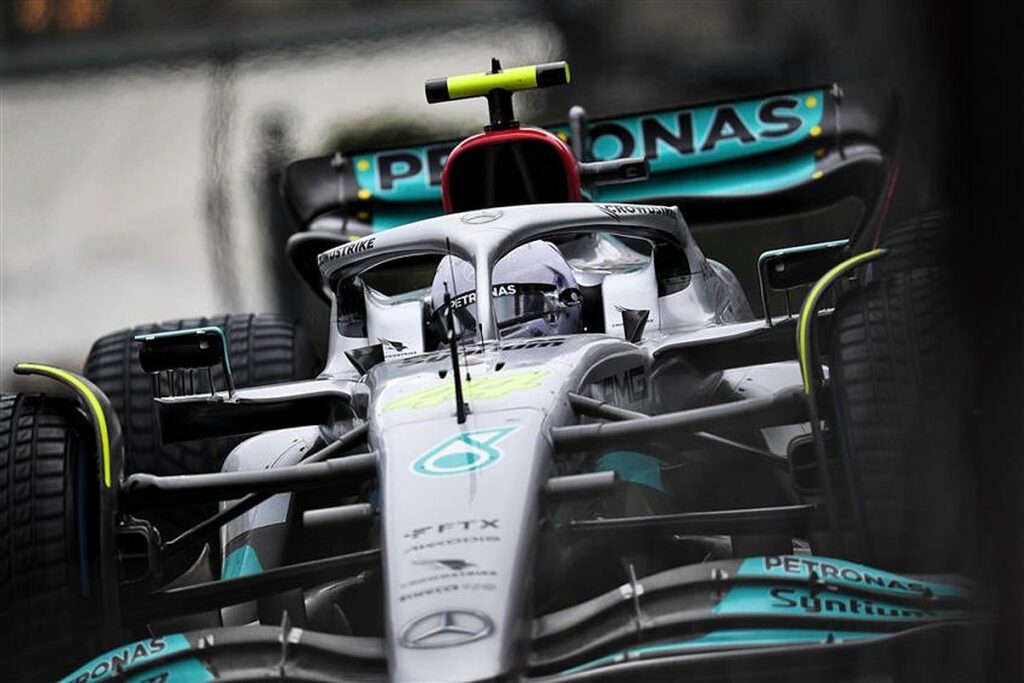The first season of the new aerodynamic regulations will likely be remembered for one thing and one thing only, porpoising, a word that Mercedes have likely banned from their garage.
It quickly became apparent in pre-season testing that the new cars had a rather peculiar issue; they bounced!
This saw sparks fly at virtually every race in the first half of the season, as the floors of the car scrapped along the surface.
Whilst some teams managed to eradicate the issue quickly, others saw their drivers’ health put at risk, most notably, Mercedes.

READ: Mattia Binotto’s sacking a sign of Ferrari desperation
The Silver Arrows perhaps had the worst porpoising issue in the entire paddock, to the point where Lewis Hamilton suffered from extreme spinal pain during the Azerbaijan Grand Prix.
The pain was so severe that he needed help to get out of his W13 post-race, with Pierre Gasly having also piped up to suggest that he’d need a cane by the time he’s 30 if the FIA don’t stop the bouncing.
With the porpoising giving some drivers headaches and causing bruising, the concern was raised that it could actually cause micro concussions.
Due to driver safety, the FIA introduced a new regulation, which measured the amount of porpoising a side experience.
The regulation permitted that teams could only suffer from a certain level of porpoising and that exceeding the measurement would result in car changes being enforced or a penalty.
Titled TD39, it was introduced at the Belgian Grand Prix, with the phenomenon having played a considerably smaller role in the second half of the season.
It was rarely spoken about again; however, it’s been revealed by FIA technical director Nikolas Tombazis that some teams were forced to make changes having exceeded the measurement.
“We had a few cases where the teams had to improve after the first practice session,” Tombazis told Auto Motor und Sport.
If everything goes to plan, porpoising will be completely eradicated in 2023, with a new rule coming into place which will see the height of the floor edges raised.
Interestingly, F1’s technical director Pat Symonds revealed that the new rule was put forward for the start of 2022 rather than 2023, but that “teams rejected it”.
“We were concerned that the cars would drive very low and the edges of the ground would be damaged too often. It was more a matter of saving costs. The teams rejected it because our suggestion came at too short notice,” recalled Symonds.
READ: Daniel Ricciardo suggests surprising reason for McLaren failure
Raising the edges of the floors is expected to see the cars suffer a five to seven-percent loss of downforce, according to Tombazis, which equates to each lap being around half a second longer.
Whilst the cars getting slower isn’t a great thing, Tombazis is expecting this time to be cancelled through “vehicle development”.
“But,” Tombazis said, “that will be cancelled out by the usual vehicle development.”

